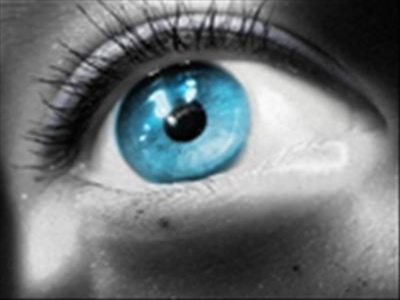Researchers Decipher Neural Code of Vision
Researchers at Cornell University claim to have found the neural code to restore vision for those to have lost their vision due to retina defects.
For the first time, researchers were able to decipher the code a natural retina that is then converted into electrical impulses sent by the retina's output cells to the brain. According to the scientists, typical retina diseases destroy the retina's photoreceptors and the associated circuitry to convert the light impulses. As long as the output cells, or ganglion cells, are still intact - which is the usual case with a retina disease - the deciphering of the retina code enables the construction of chip implants that, in theory, restores vision.
So far, the researchers claim, the concept has worked to help blind mice see again. They also claim to have "cracked" the code of a monkey retina, "which is essentially identical to that of a human". The hope is that 25 million people who are blind because of a retina disease will be able to see again. The researchers believe that their device can provide a "near normal" ability to see.
According to the project, an "encoder" chip can be used to convert natural images received by the eye into "streams of electrical impulses", while a mini-projector is deployed to converts these electrical impulses to light impulses. The researcher found that light-sensitive proteins that are placed in the ganglion cells enable a transmission of the code to the brain.
The researchers said that their prosthetic will undergo human clinical trials, which aims to ensure the safety of the necessary gene therapy to integrate the light-sensitive protein. There was no information when this technology could become available, but clinical trials typically take several years until completed.
Get Tom's Hardware's best news and in-depth reviews, straight to your inbox.

Wolfgang Gruener is an experienced professional in digital strategy and content, specializing in web strategy, content architecture, user experience, and applying AI in content operations within the insurtech industry. His previous roles include Director, Digital Strategy and Content Experience at American Eagle, Managing Editor at TG Daily, and contributing to publications like Tom's Guide and Tom's Hardware.
-
amk09 It may be awesome and it may not be.Reply
I can't get the thought of emotionless robots out of my head... -
RipperjackAU velocityg4One more step toward making the Borg a reality/Reply
Oh, my boss would love this. A borg army to cut code 24/7. Ironic, as I write this Sunday morning, from my cubical, as yet again, I've had to work another weekend. ****ARGH**** -
beayn RipperjackAUOh, my boss would love this. A borg army to cut code 24/7. Ironic, as I write this Sunday morning, from my cubical, as yet again, I've had to work another weekend. ****ARGH****I take it the boss isn't there to catch you reading Tom's?Reply -
freggo Of course if you pay a little extra you can get a remote control to allow you to zoom in, add Night Vision, IR or UV filters and of course Still and Video capture with Blue tooth downloads :-)Reply
Don't laugh, if they get the chip to work that would all be possible !
Then the question comes up if Doctors will offer to replace healthy retinas for the extra features; sort of like cosmetic surgery but to improve features instead of looks.
-
alidan awsome, at some point i can yell eff this, and get eye replacements for when they get so bad im legaly blind... nice.Reply
